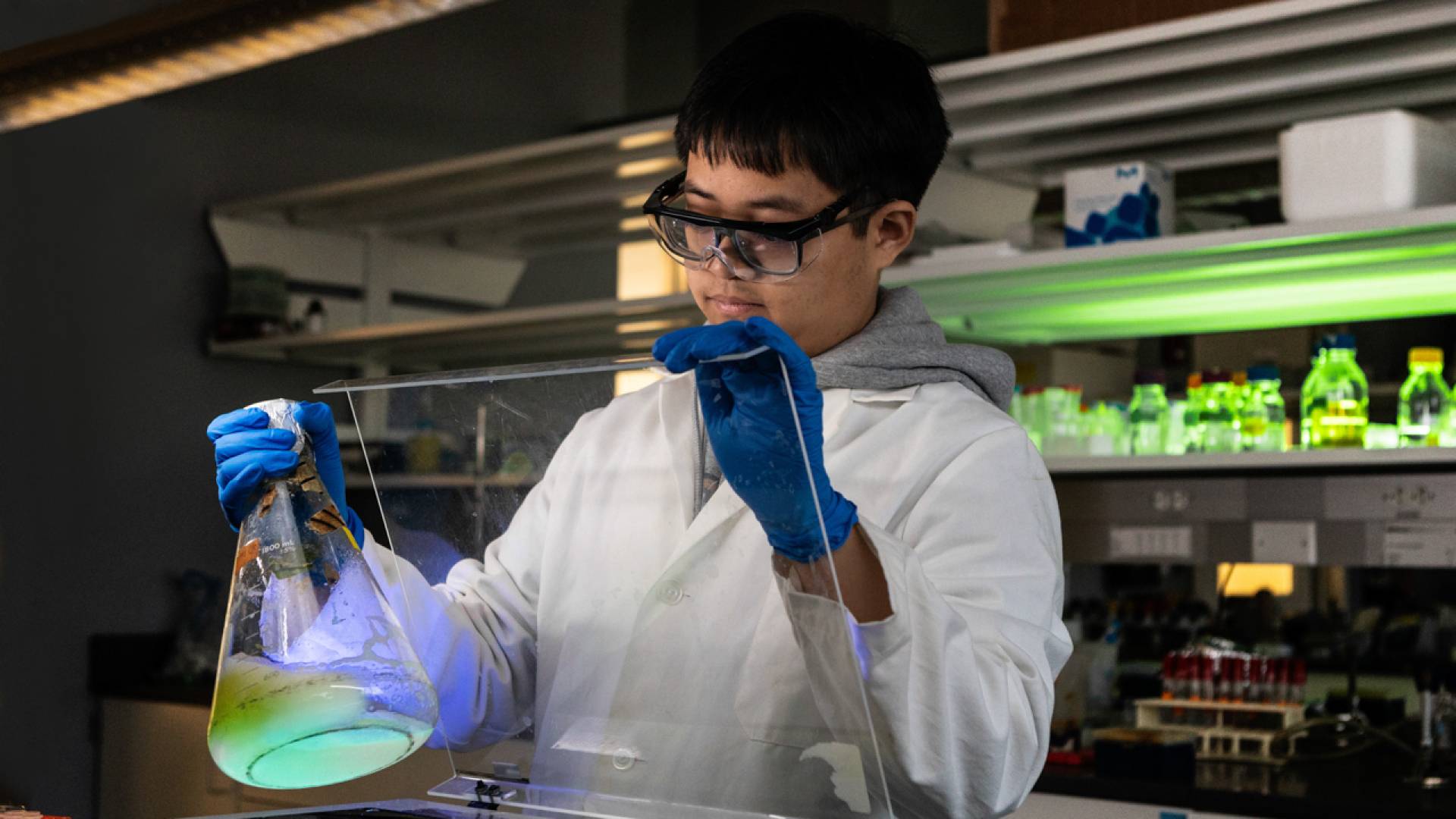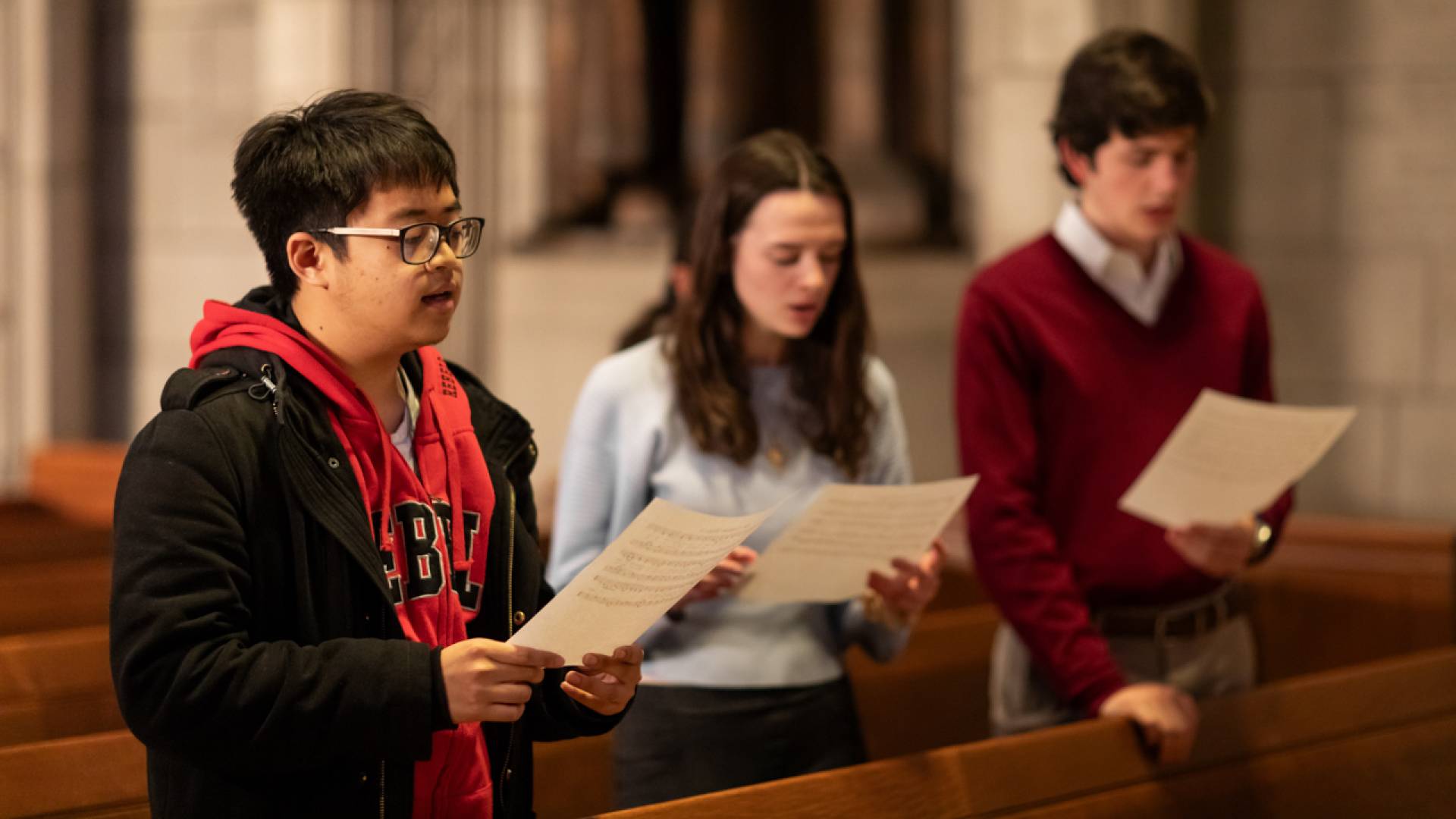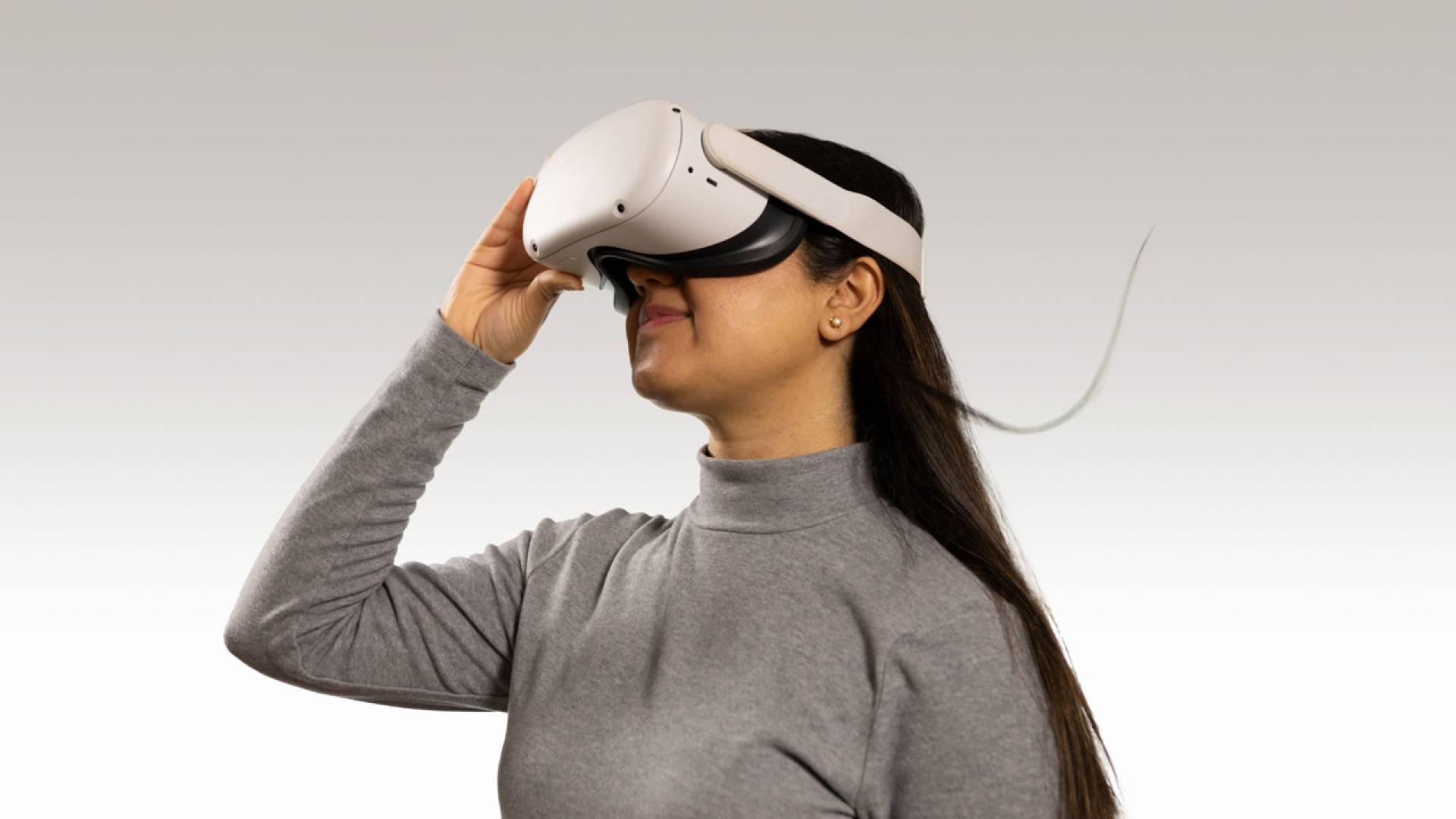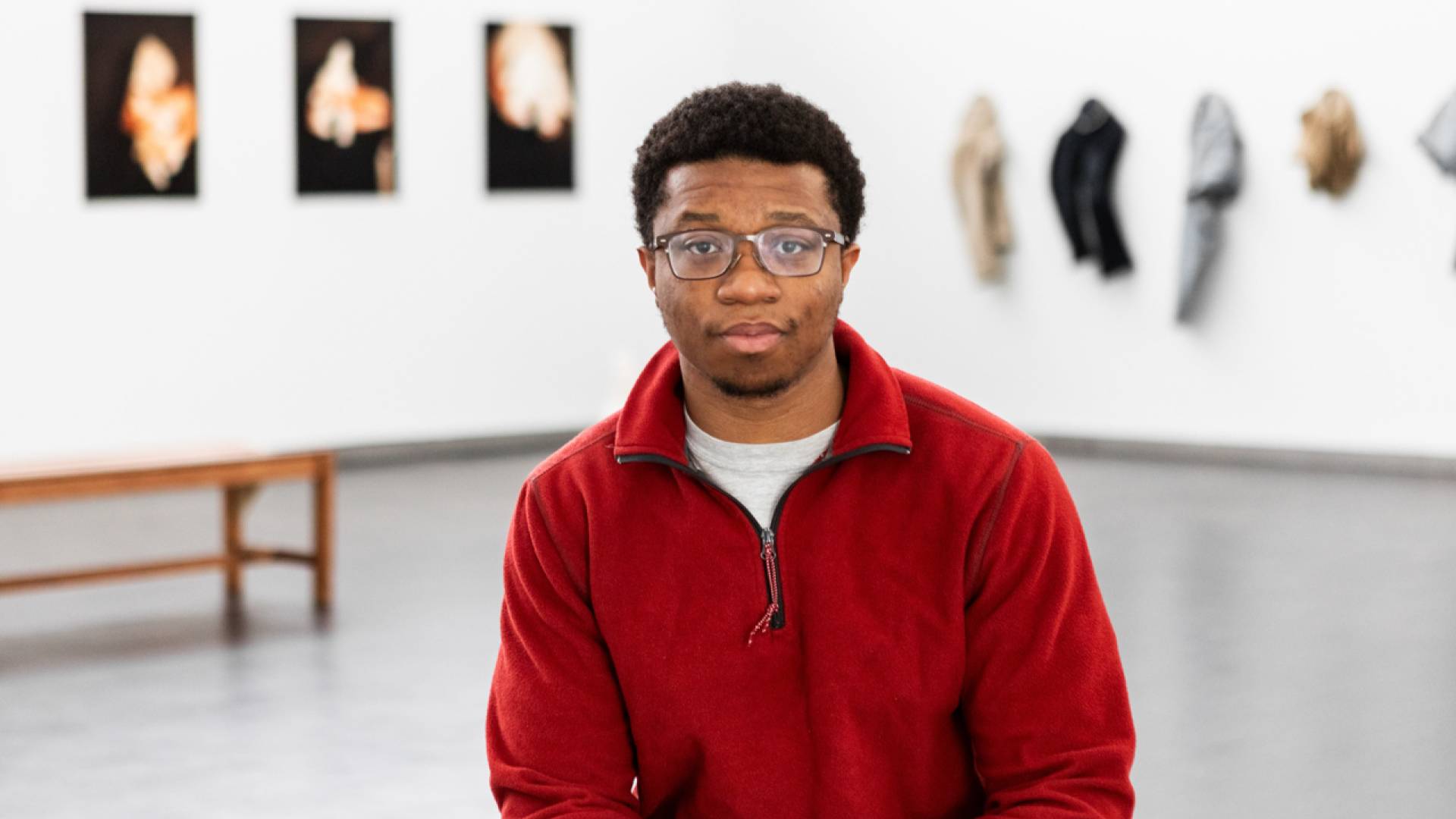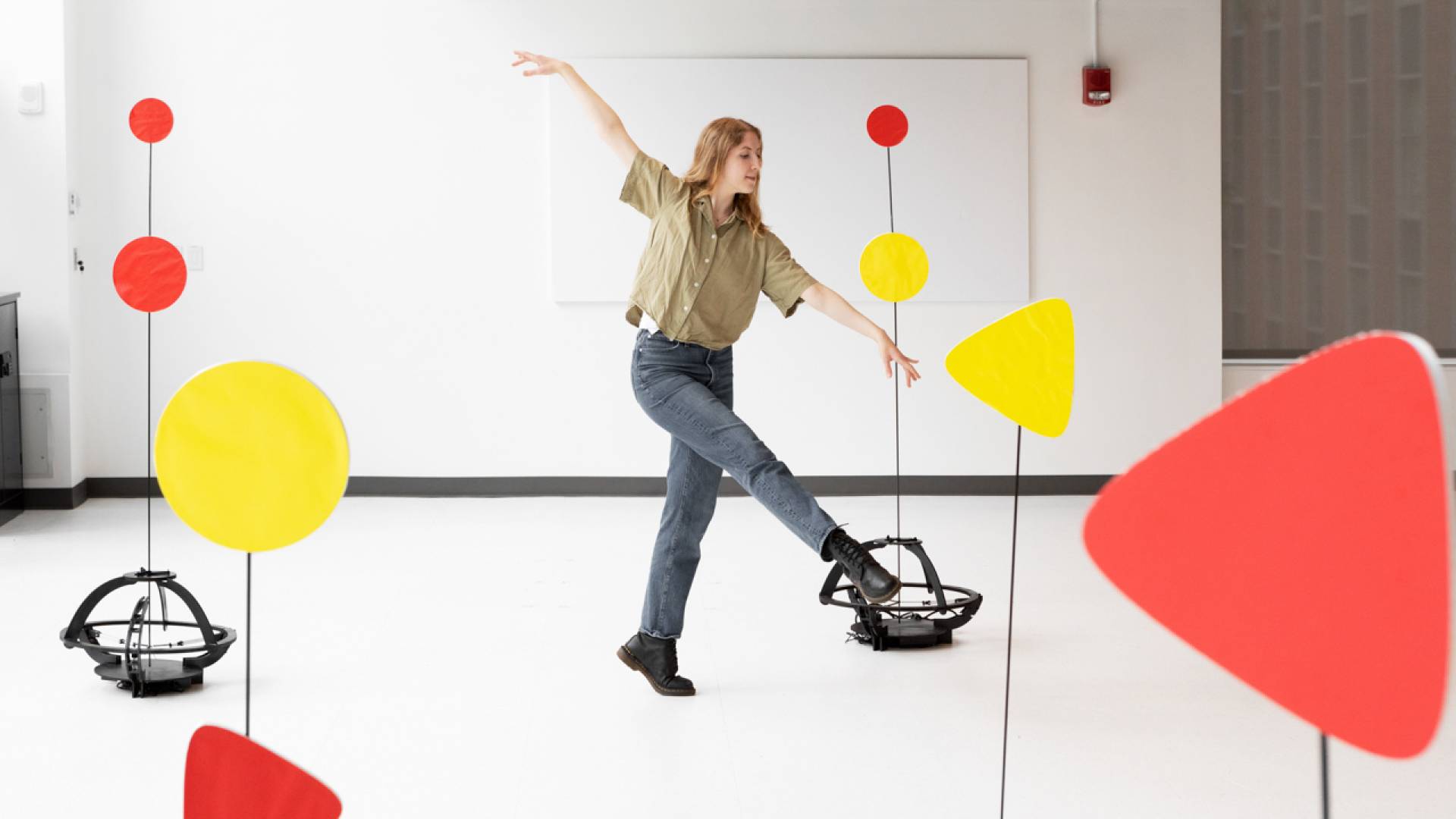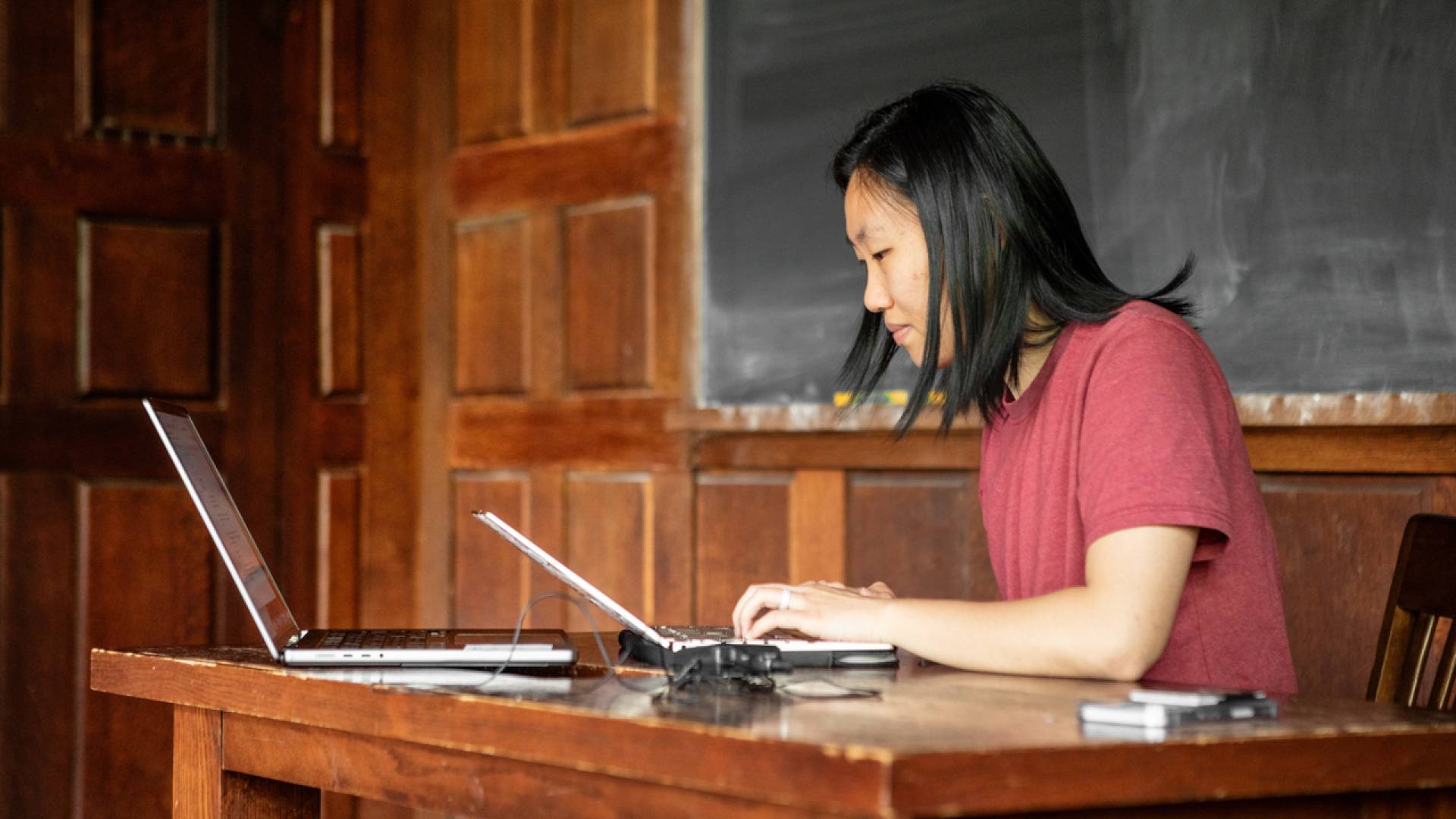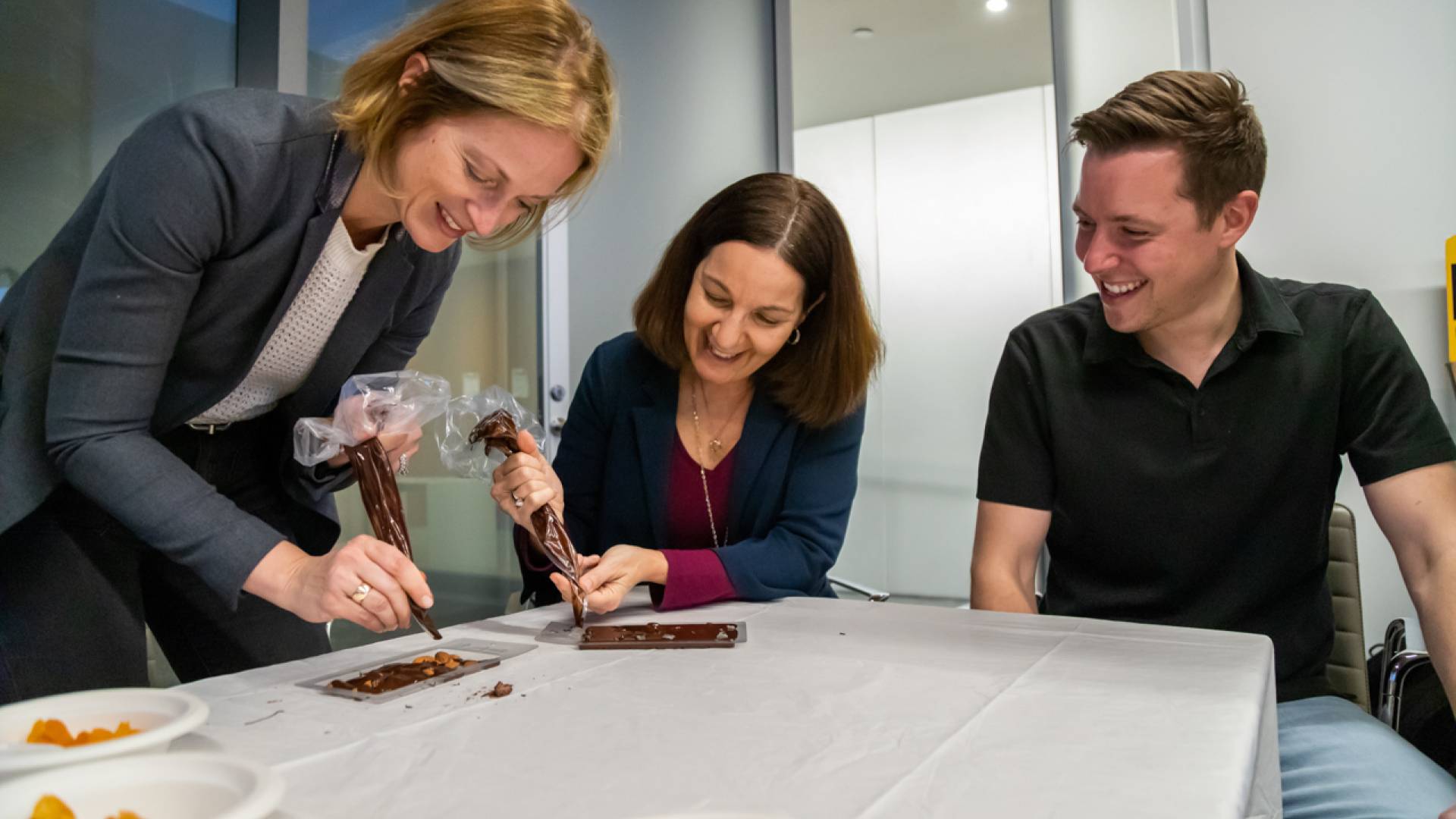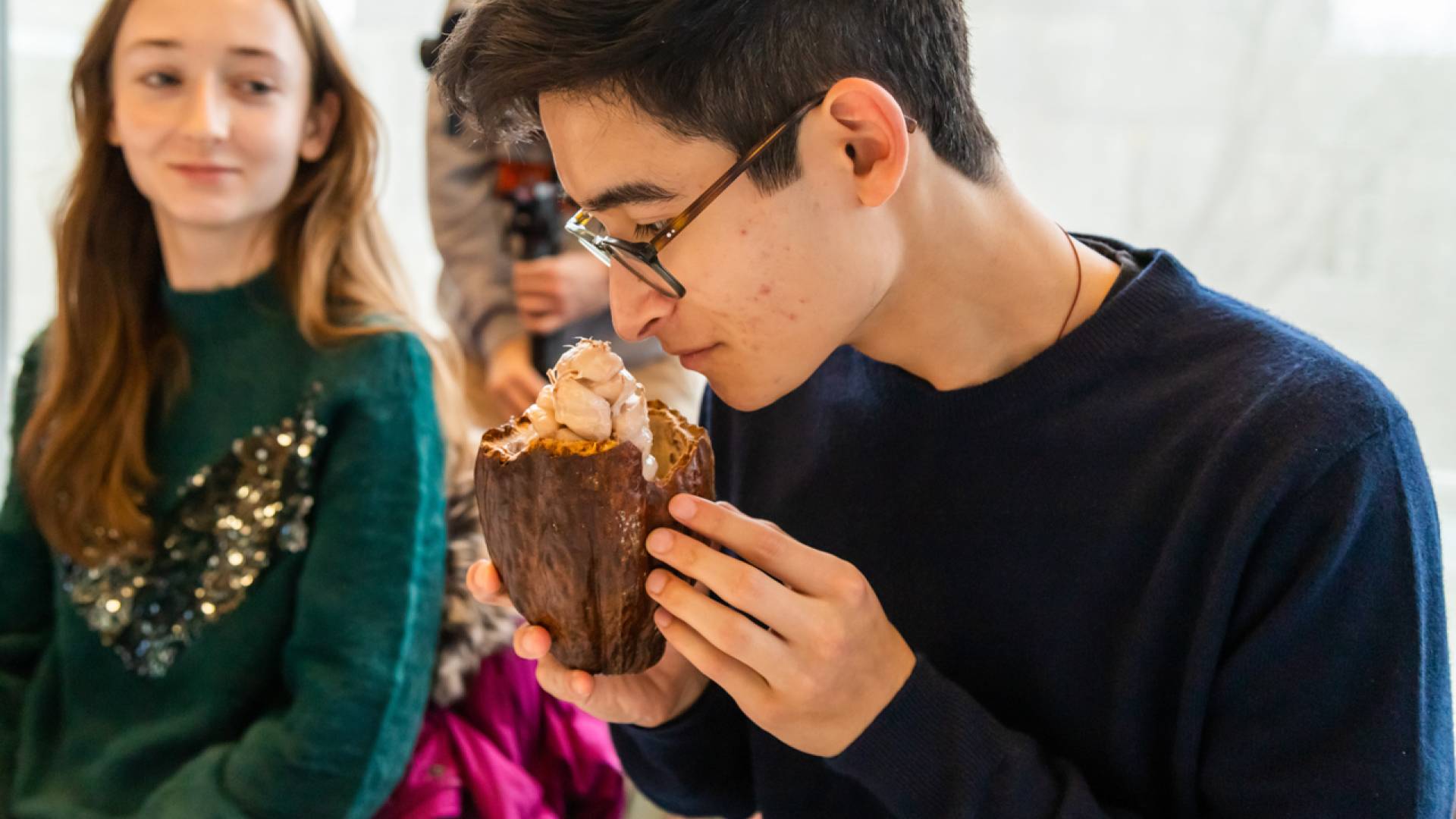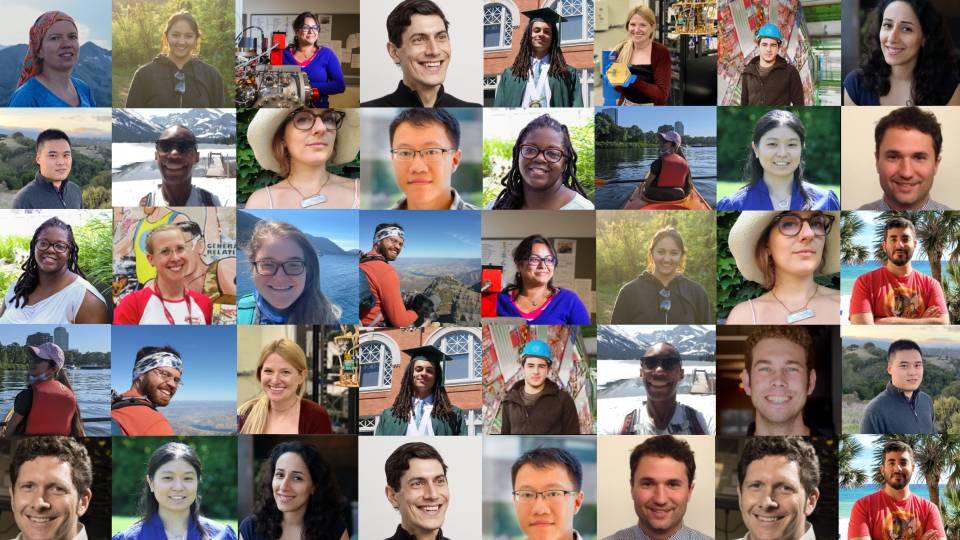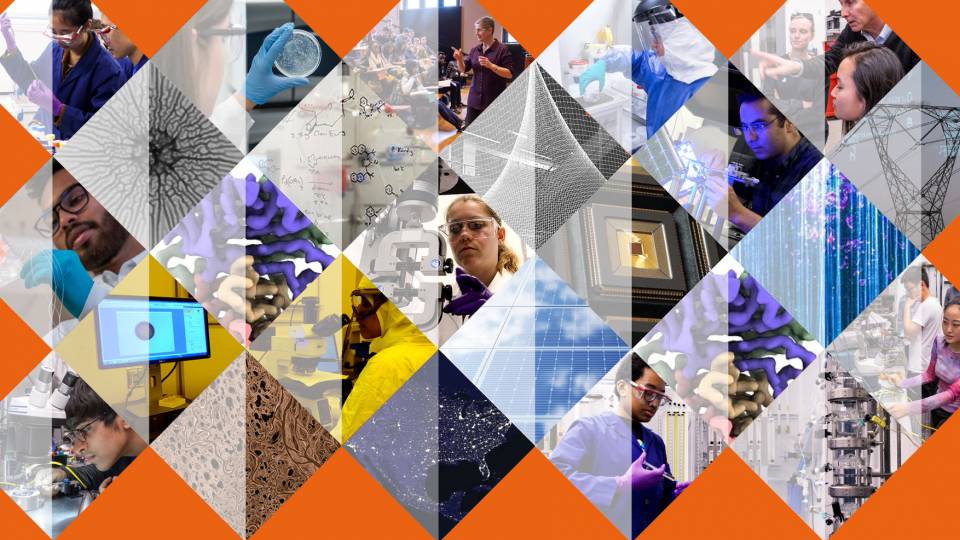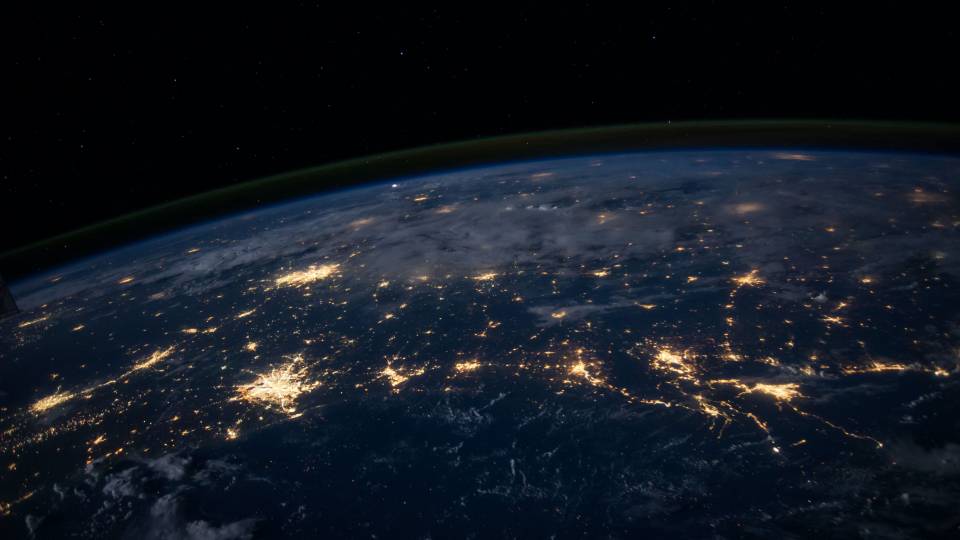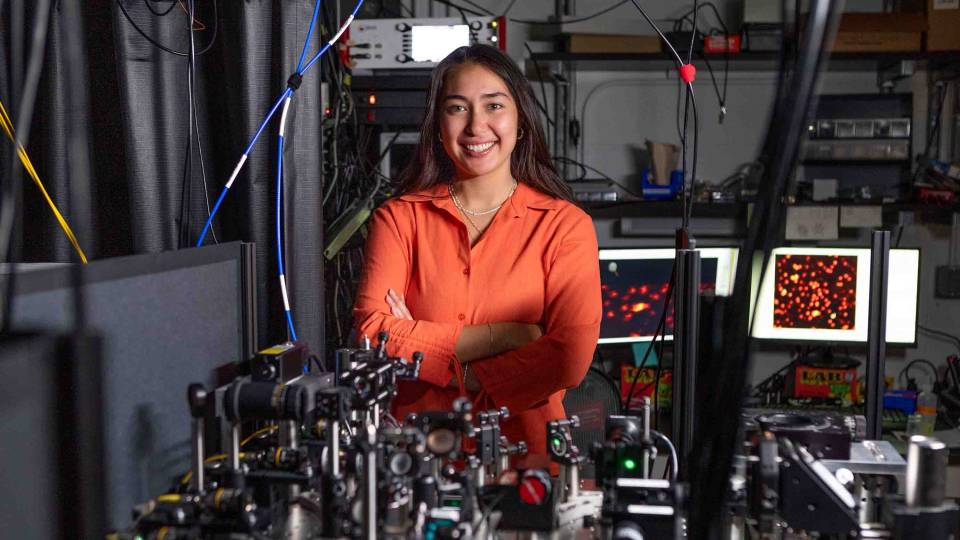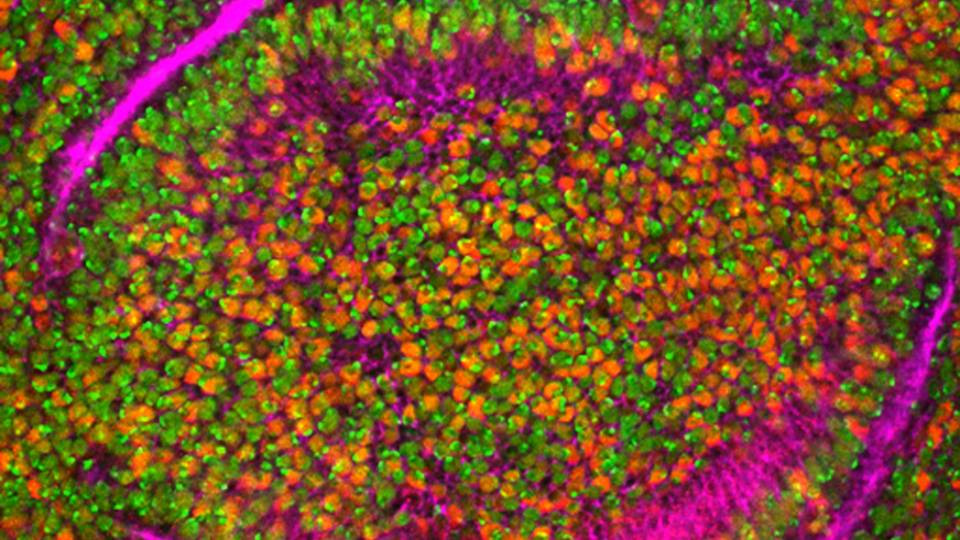Princeton students’ coursework in the arts and humanities opens new pathways of discovery in engineering. Arthur Acuna, a chemical and biological engineering major, made room every semester to take courses in classics, creating writing, philosophy and religion.
Arthur Acuna, a first-generation college student who grew up in Las Vegas, fell in love with Dostoevsky in high school and came to Princeton with an interest in five different majors including English. He landed on chemical and biological engineering, but also went deep into the humanities, leaving room every semester to take courses in classics, creative writing, philosophy and religion.
“Getting to exercise my left brain and right brain — the side that values logic and correct answers and the side that grapples with beauty and human complexity — is a real gift of freedom. It’s like being able to breathe with both of my lungs,” said Acuna, a 2023 graduate.
Acuna’s undergraduate experience was not only shaped by labs and problem sets but also steeped in the arts and humanities — and he could be found two evenings a week singing Gregorian chant in Princeton University Chapel as part of the Aquinas Institute, Princeton’s Roman Catholic ministry.
It’s this grounding in the liberal arts that sets Princeton engineers apart, said Andrea Goldsmith, dean of the School of Engineering and Applied Science and the Arthur LeGrand Doty Professor of Electrical Engineering.
“Princeton is a liberal arts university,” Goldsmith said, “All of our students are immersed in the liberal arts throughout their education here.”
That interplay of technology and the liberal arts is part of her own engineering origin story: Her father was a German engineering professor, her mother a cartoonist and character designer for “The Adventures of Rocky and Bullwinkle” and “Fractured Fairy Tales.”
The arts and humanities, she said, immerse engineering students in other people's lives — past, present and future — and in different worlds than the one they live in. She believes this is essential to understanding the context in which technology is created and to cultivating a broader view of the problems technology is trying to solve for.
The pathways Princeton engineering students take towards this discovery are infinite.
Megan Ogawa: ‘Seeing the big picture’
Megan Ogawa’s grandparents speak Mandarin, which inspired her to take language courses at Princeton — Mandarin, French and American Sign Language — as well as classics.
“Engineering and humanities go hand-in-hand,” said Ogawa, a 2023 graduate and computer science major who also earned a certificate in linguistics. “Understanding both allows me to see the full picture of how my work fits into the world.” Her two favorite classes were “Rhetoric: Classic Theory, Modern Practice” and “American Deaf Culture.”
For her senior thesis, Ogawa developed a web app for professors and students of college-level German. Users copy and paste “natural” texts from the internet into the app — literature, newspapers, speeches and more — which scans them for the 1,000 most common German words. After graduation, Ogawa joined the Navy as the first woman in the Princeton Navy ROTC program to be commissioned into the submarine community.
David Opong: A mindset beyond problem sets
David Opong, a rising senior and a chemical and biological engineering major, has taken African American studies, classics, contemporary art history and religion courses to step outside of the lab and beyond problem sets.
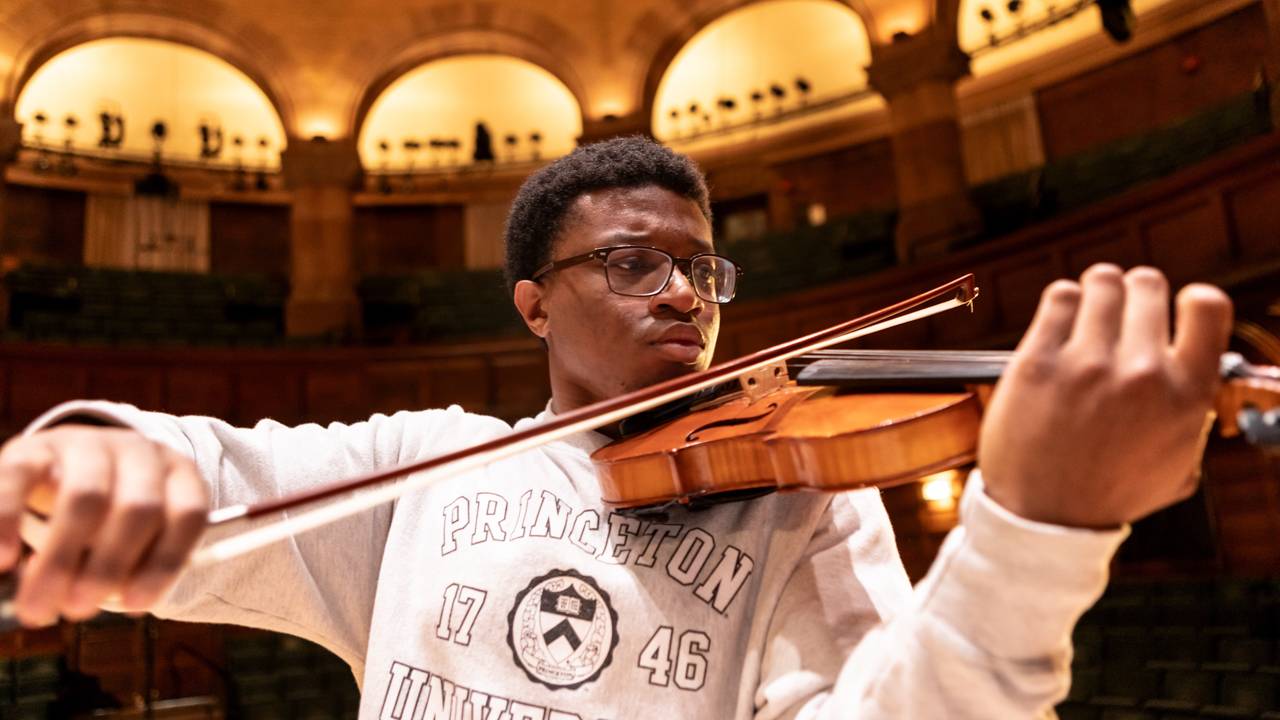
“Diving into a humanities class is a totally new way of thinking,” said David Opong, a chemical and biological engineering major and violinist in the Princeton University Orchestra.
Opong, a violinist with the Princeton University Orchestra whose favorite composer is Bach, is fascinated by the similarities between the materials and techniques artists use to create their art and his work in bioengineering. He likes to think about how the artist’s path of discovery — as well the social and political impact of the art itself — mirrors his process in the lab.
“Diving into a humanities class is a totally new way of thinking, different than a STEM mindset,” he said. “It’s discovering new ways of figuring out how to enter a conversation and add to that conversation. It’s talking about big ideas and learning how to draw on different frameworks. There's so many different ways you can look at something.”
Ananya Grover: Tech with a human focus
Growing up in New Delhi, India, Ananya Grover always had her nose stuck in a novel. A computer science major who is also pursuing certificates in cognitive science and creative writing, she said her courses in American studies, gender and sexuality studies, Near Eastern studies, poetry and the Princeton Atelier have helped deepen her interest in the ethics of artificial intelligence and human-computer interaction.
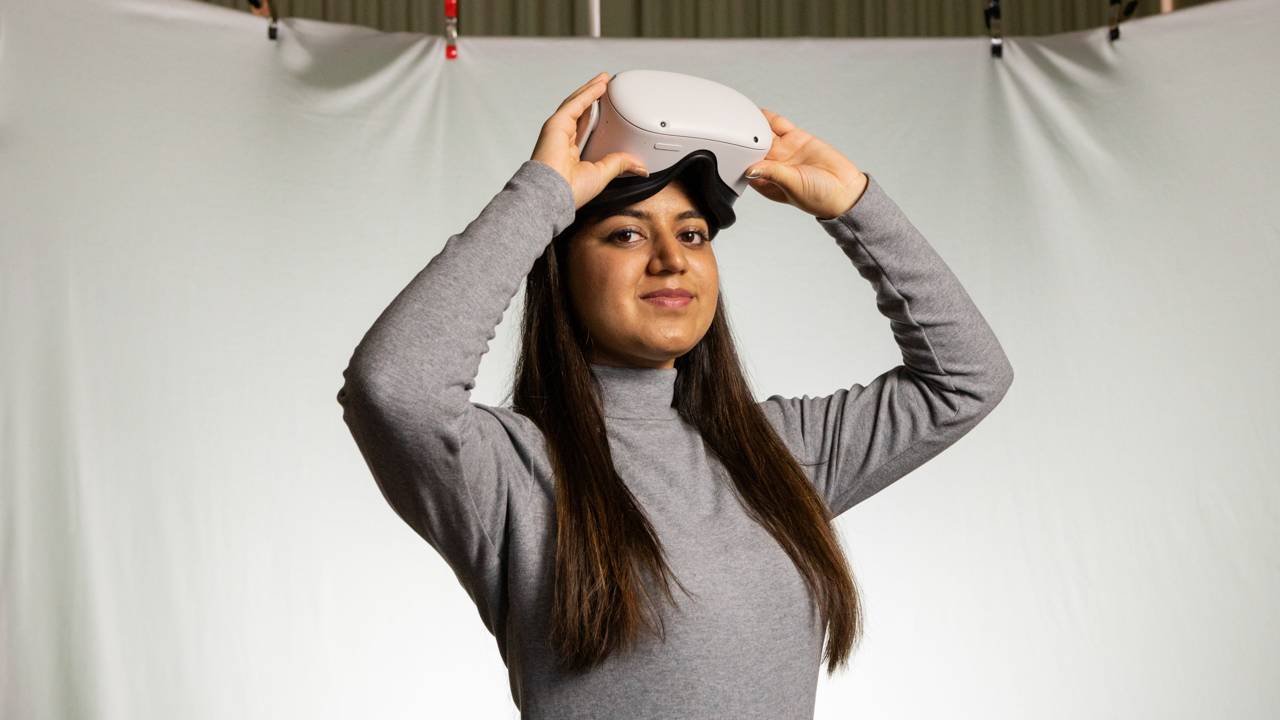
Ananya Grover, a computer science major who is also pursuing certificates in cognitive science and creative writing, said her classes in the liberal arts help her approach engineering problems "with a more human-centered lens.”
She interned this summer on the Apple News technical operations team and is planning to write two senior theses: one in computer science that considers the social, ethical, legal and policy questions surrounding chat-bots, and a poetry collection in creative writing.
“The harms of the algorithms we develop might be subtle and unseen but more pernicious than individual human bias,” said Grover, a rising senior. “Through studying the arts and humanities at Princeton, I have learned to approach engineering problems with a more human-centered lens.”
Sarah Witzman: What do we want from technology?
Sarah Witzman, a 2022 graduate, is drawn to the design aspects of engineering. In addition to her mechanical and aerospace engineering major, she earned certificates in robotics and intelligent systems, Spanish language and culture, and dance.
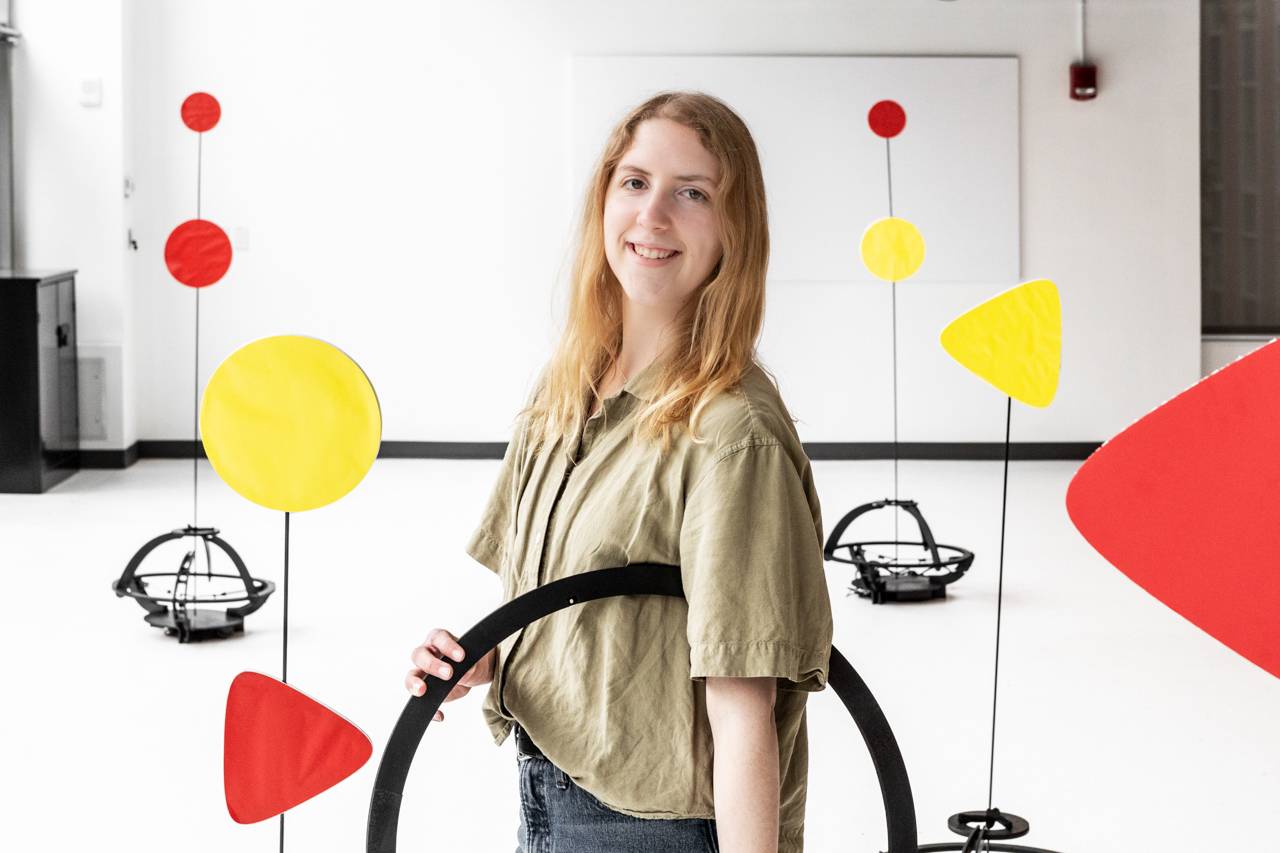
Sarah Witzman’s senior thesis project — designing and constructing a swarm of small “Rhythm Bots” to explore the calming effects of human-robot interaction — combined her studies in engineering and dance and has potential applications in neuroscience and psychology.
“At Princeton, I could pursue engineering but also my other passions,” she said. “My arts and humanities coursework presented new perspectives in thinking about the big-picture challenges and applications of engineering.”
Witzman, who plans to pursue a career in robotics or mechanical design within the fields of aerospace or medical technology, also completed a new one-year master’s program for Princeton engineering students who had graduated during the pandemic.
In the course “Technology and the City,” offered through the School of Architecture, she said, “One question we continually returned to was, ‘What do we want technology to do for us?’ Thinking about this question from a humanist perspective caused me to view my technical work as an engineer in a different light.”
The power of extra perspective
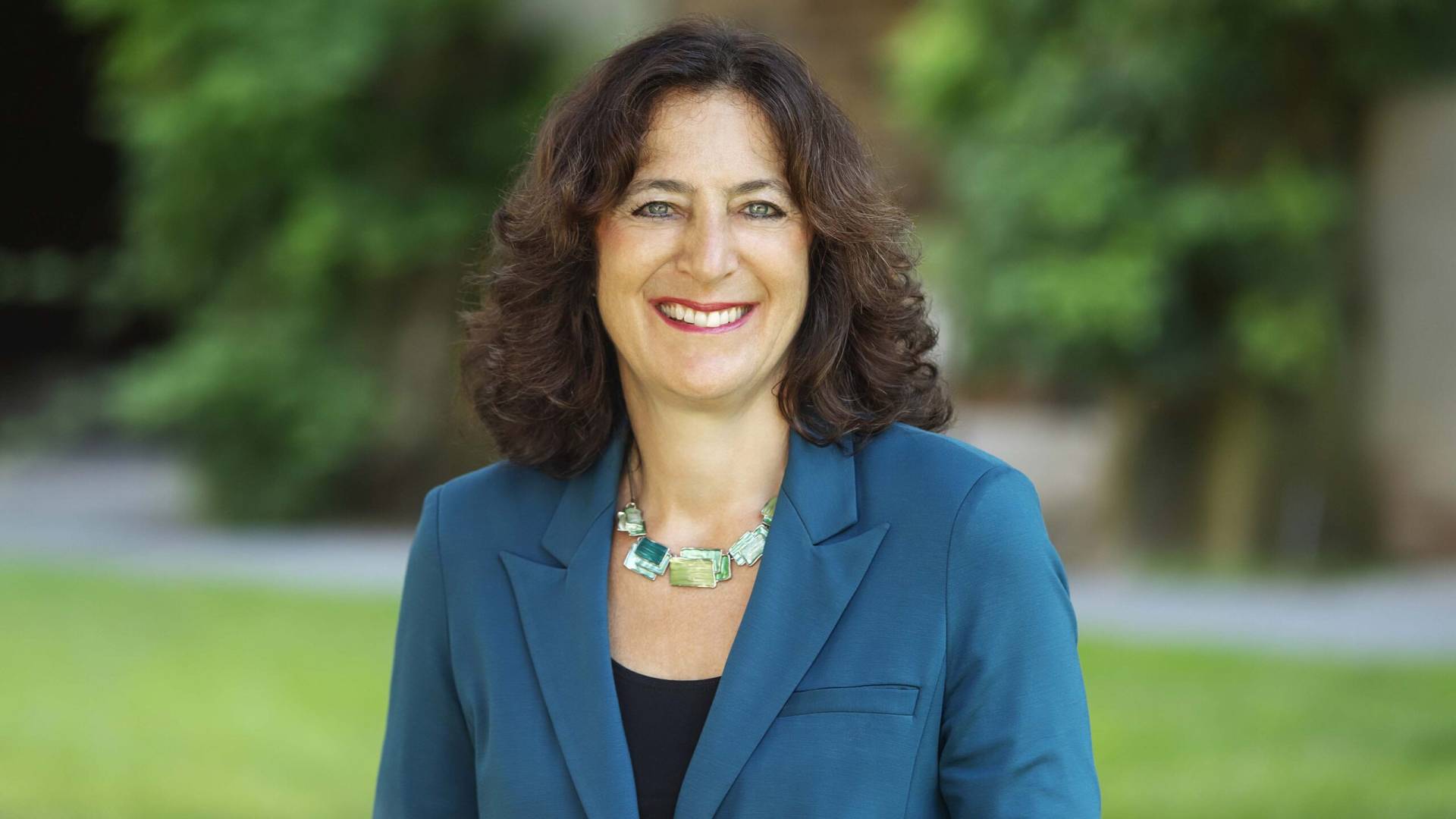
“Our engineers think differently and bring their liberal arts education to their engineering in powerful ways,” said Andrea Goldsmith, dean of the School of Engineering and Applied Science and the Arthur LeGrand Doty Professor of Electrical Engineering.
Whether engineering students choose to take liberal arts classes on their own or to meet distribution requirements, “they are inspired and influenced by these classes in ways that they didn't expect, and these classes connect to their work as an engineer in ways that they couldn’t have imagined,” Goldsmith said. “Our engineers think differently and bring their liberal arts education to their engineering in powerful ways.”
One of those ways is in their ability to partner with people outside of engineering to understand the problem that they’re trying to solve, she said.
“Think about something like climate change,” she said. “It's not just about creating technologies to mitigate climate change, it's getting people to do things differently. How do we wean ourselves off fossil fuels and transition to clean energy? How do we embrace clean energy when it costs more? What is the impact of climate change on cities and where people live?”
The creative process in the arts also feeds creativity in engineering. “With art, you're starting with a blank canvas or piece of paper or a hunk of clay or an empty stage,” Goldsmith said. “You're coming up with something new, and that's exactly what engineering is. I think that there's much more of an intertwining of the arts and creative expression with engineering than people realize.”
Especially in the world of machine learning and AI, Goldsmith said, it’s critical to think deeply about what humans bring to the table in terms of solving problems. “What makes Hemingway a brilliant author? There's something intangible about the way a human being approaches writing or solving a problem that a machine cannot emulate,” she said.
‘Un-silo-ing’ engineering and the liberal arts
Sami Kahn is executive director of the Council on Science and Technology (CST), a unique academic hub at Princeton. She said CST’s courses and programs blend STEM with the arts, humanities and social sciences and enable the “un-silo-ing” of technology and the liberal arts. “We liberate students and faculty from preconceived notions of ‘who can do science’ and open up new ways of knowing and doing.”
CST’s hands-on workshops fill up within hours. In the popular “Origami Engineering” workshop, students learn how the tactile art of paper folding can be applied to develop state-of-the art technologies. A science of food series called “Brainy Bites” examines the scientific phenomena of favorite foods like coffee and chocolate.
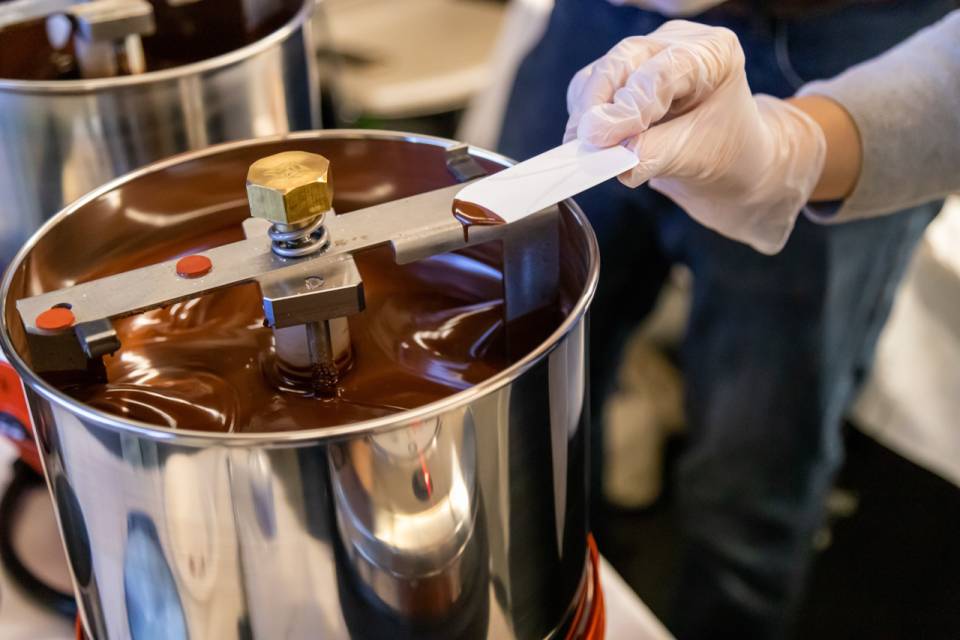
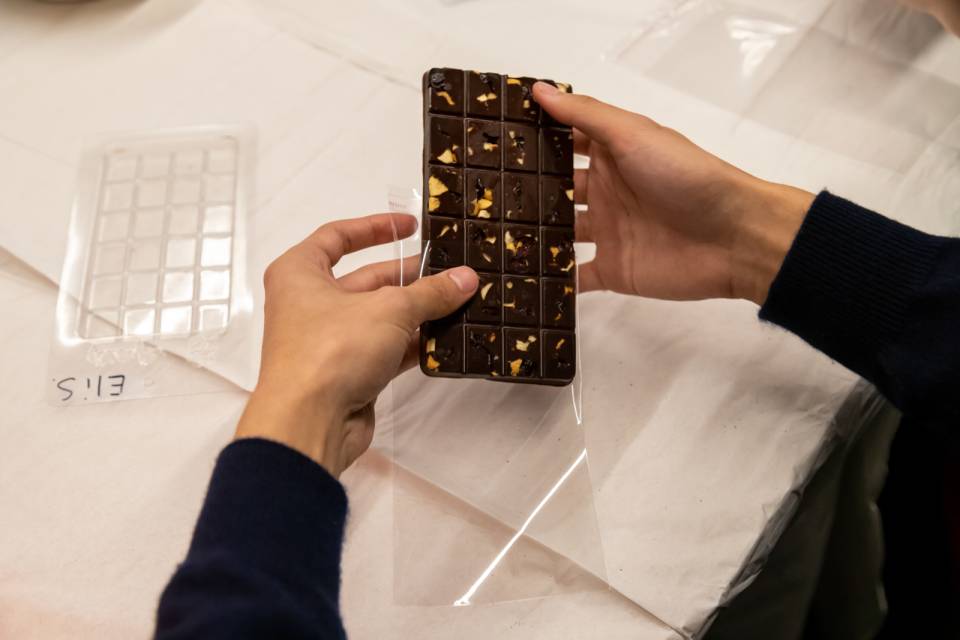
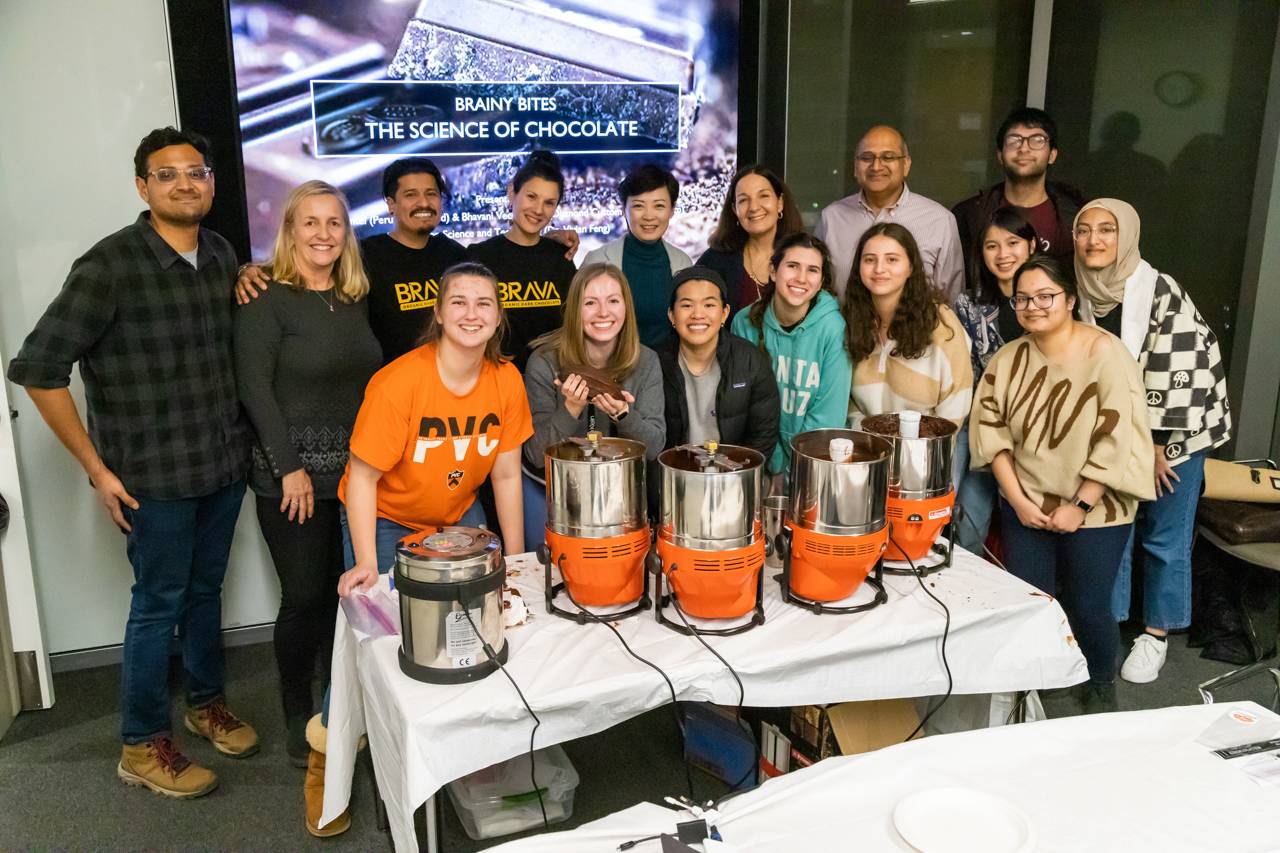
Princeton’s Council on Science and Technology (CST) brings together technology and the liberal arts through innovative courses and programs — including a “Science of Chocolate” workshop.
Students learn the material science behind the glossy look and crisp snap of well-made chocolate.
CST’s hands-on workshops — taught by faculty and community partners — “open up new ways of knowing and doing,” said Sami Kahn, executive director of CST (back row, third from right).
In CST’s signature team-taught course, “Transformations in Engineering and the Arts,” students study and investigate visuals, sound, structure and movement in a rigorous and creative engagement of both engineering and the arts.
For the movement module of the course, students collaborate as engineer-artists to create kinetic sculptures from a microcomputer, light sensor, motor and found objects. “I am impressed every time with the transformations in the thinking and doing of the students in this class,” said Naomi Leonard, the Edwin S. Wilsey Professor of Mechanical and Aerospace Engineering and department chair, who designed the course during her tenure as CST director.
Students design and build many of the course projects at CST’s StudioLab — a laboratory, makerspace and artistic studio that includes a performance space outfitted with theater lights, motion capture and a sprung dance floor; fabrication equipment like 3D printers, machine embroidery and laser cutting; and an electronics station.
“Imagine it, and you can build it,” said Penelope Georges, a bioengineer and the associate director of STEM Initiatives at CST, and a co-instructor of the course. “It is a place where students can experiment, not only by drawing on the practices of their disciplines, but also by looking beyond them.”
Engineers in service to the world
“Many of our students say they become engineers because they want to change the world for the better and develop technology that benefits people,” said Goldsmith. “This directly reflects Princeton’s informal motto — ‘In the nation’s service and the service of humanity.’ We attract students because of that motto and the culture that underlies it.”
Acuna, who plans to pursue graduate studies in toxicology, said he chose engineering partly as a way to pay forward the opportunities he’d received.
As a first-generation student who came to Princeton as a QuestBridge Scholar, “I knew that I wasn't just studying at Princeton so that I could receive a great education,” he said. “It was also so that I could give back to my parents and the communities who have supported me along the way.”
“It could have been very easy for me not to have ended up here, so I wanted to make the most of this great gift that I've been given,” he said. “I thought engineering would be a perfect opportunity to do that — taking in knowledge and then creating something from it."
